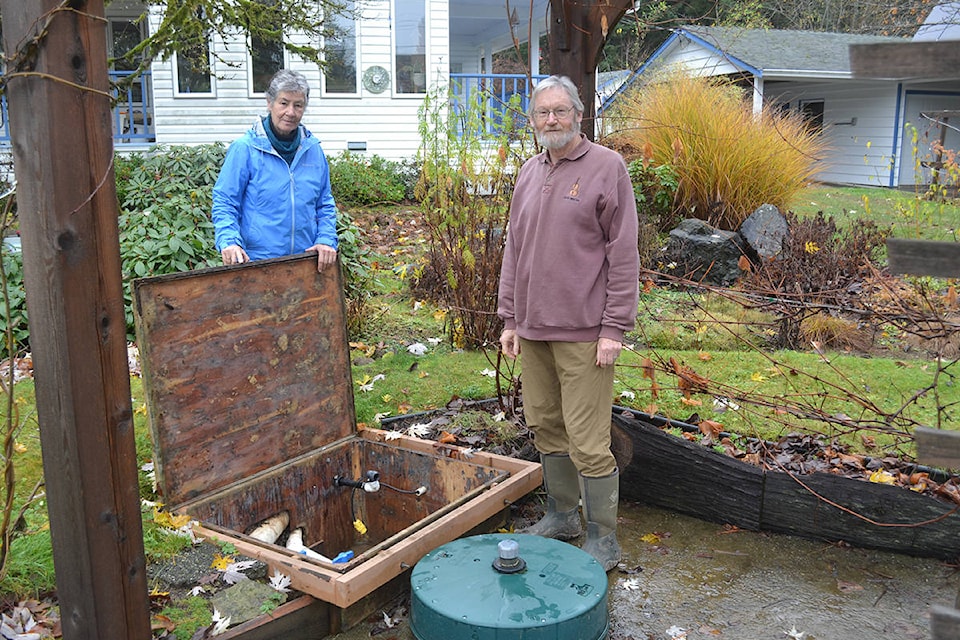Cowichan’s Capture the Rain campaign: Part III
The Cowichan Watershed Board is sharing this series of profiles on landowners in our region who are doing their part to prepare for Cowichan’s changing climate by capturing rain. From small cisterns to irrigation ponds, each is collecting rainwater to supplement their garden or farm needs in the face of increasing summer droughts. More info at www.cowichanwaterchallenge.ca
Rain Harvesters: Sandy McPherson & Alan Philip
Who they are: On their rural property in North Cowichan Sandy McPherson and Alan Philip are continually working towards low-impact living. They are early adopters of water-wise gardening, supplement their home energy use with solar panels, and collect rainwater for their garden irrigation.
Why they collect rainwater:
Sandy and Alan are avid gardeners and grow as much of their own food as possible, but recognized they needed more water capacity to support their expanding gardens. Harvesting rain seemed to be the logical option for them so they assessed their options. If they continued to increase the size and scope of their gardens they needed more than a few rain barrels for summer watering, but didn’t want a large cistern in the middle of the yard.
How they collect rainwater:
Combination of cistern, micro-drip irrigation, and mulch:
Sandy and Alan opted for a 2,800-gallon underground cement tank and situated it on the lowest aspect of their property. The tank captures the roof run-off from two downspouts and has two levels of filtration. There’s minimal maintenance other than a monthly cleaning of a micro-filter before the tank. The collected rain is used for their 1,700 square foot garden in conjunction with a comprehensive micro-drip irrigation system, as well as good mulching practices.
Results? In the summer months the tank lasts approximately six weeks, if there is no rain. It takes about two days to fill in a steady rain, which is much faster than if they were to use a hose from their well. The added bonus of this installation was that the cement pad over the cistern created a natural outdoor patio. They built a pergola over it, and planted fruiting vines at the posts, for summer entertaining.
Words of Water Wisdom:
Sandy and Alan highly recommend capturing rain as it helps you develop a conservation mindset and an awareness of your water usage. The cost of adding a rainwater collection system to your home can range from a few hundred dollars to the cost of a new car. They believe it’s a wise investment in their property and the watershed. Alan suggests, “…raising awareness of your daily water use goes a long way in changing consumption practices.”
